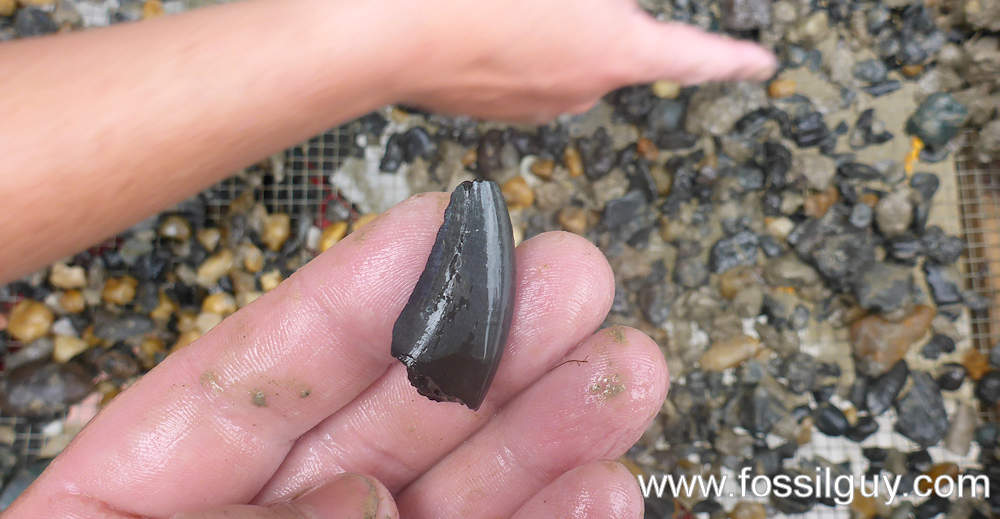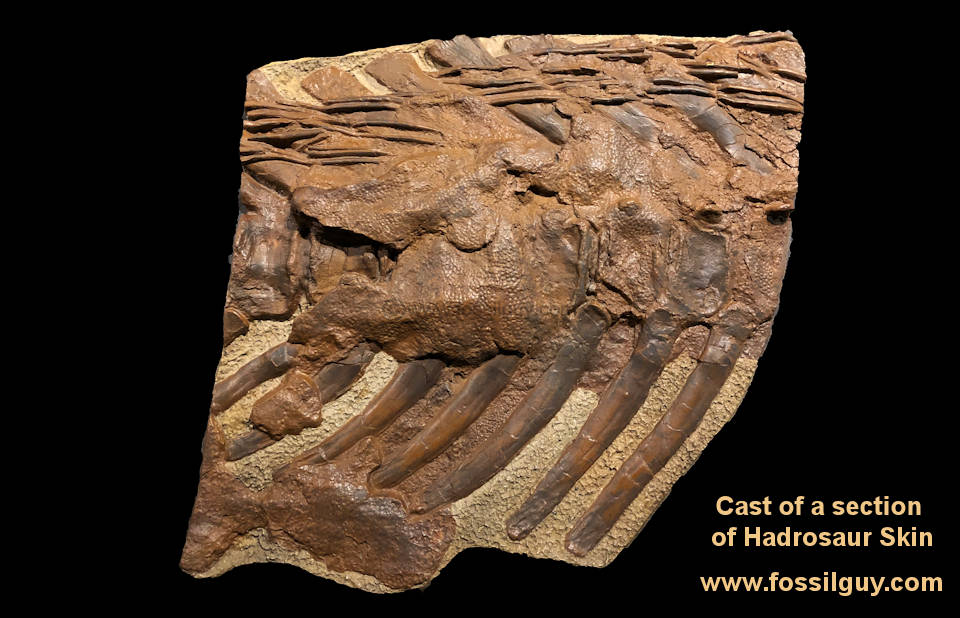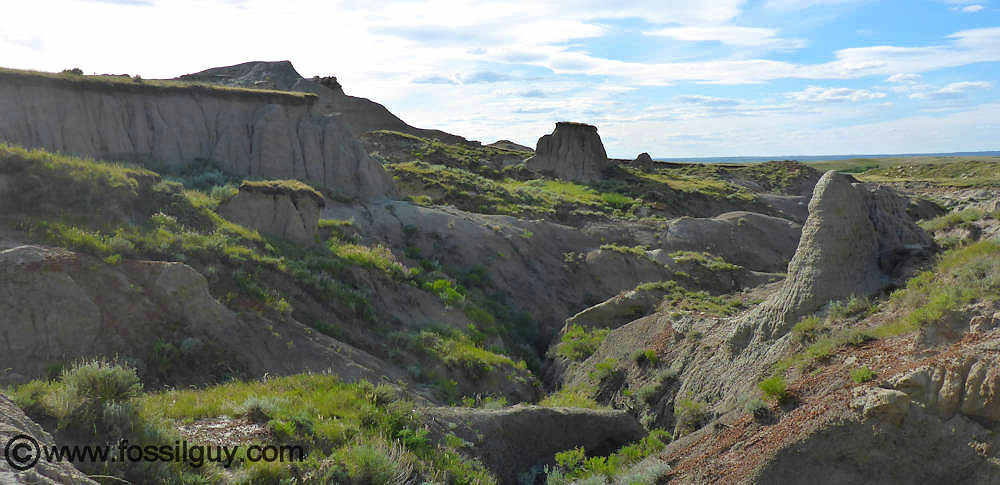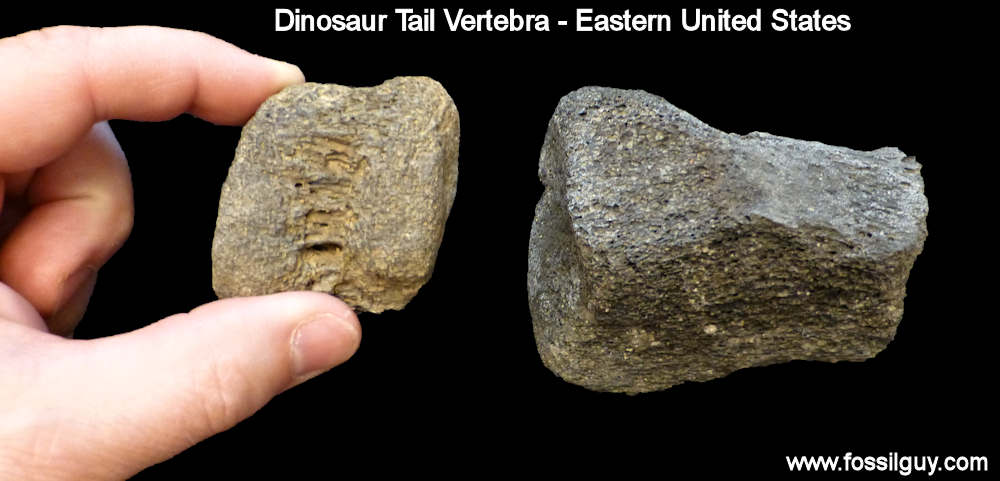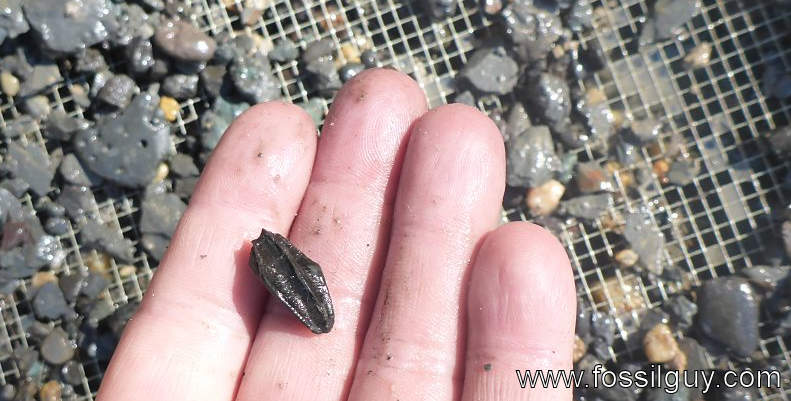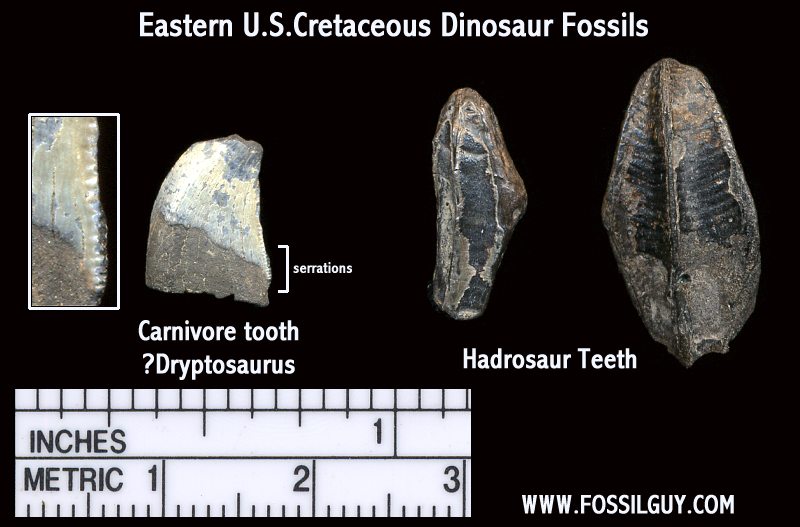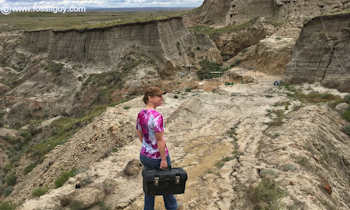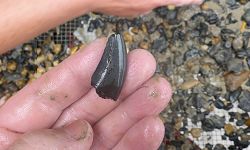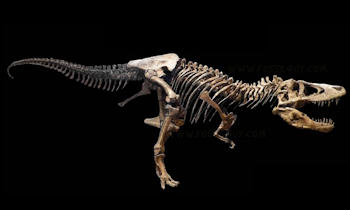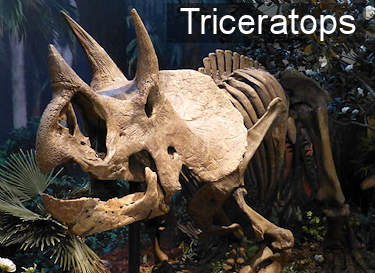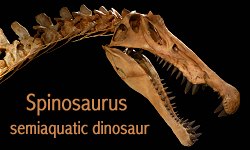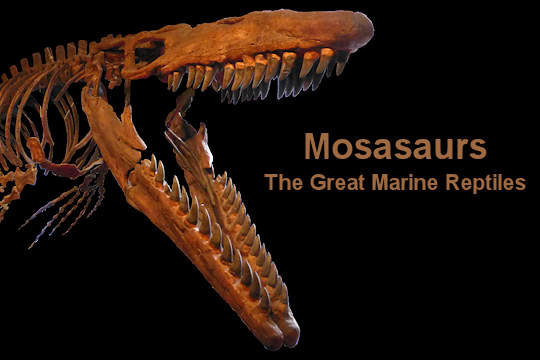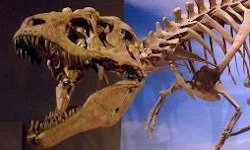Article written by: Jayson Kowinsky - Fossilguy.com
EAST COAST DINOSAURS
East Coast Vs West Coast Cretaceous Dinosaurs of North America - Why the Fossil Preservation Difference?
When one thinks about dinosaur fossils, Western North America usually comes to mind, and it's no wonder. The Western United States is world famous for its dinosaur fossils in quantity, quality, and diversity in all three dinosaur ages. Here, nearly complete specimens of Coelophysis from the Late Triassic are found. The Jurassic Morrison Formation preserves Stegosaurs, a wide range of Sauropods, and the famous Allosaurus.
It gets even better in the Cretaceous where formations including the Lance and Hell Creek contain over 30 genera of dinosaurs! Ceratopsids are more diverse here than anywhere else in the world. Hadrosaurs such as Edmontosaurus were incredibly common.
A plethora of theropods have been found, from the smaller dromaeosaurids (the feathered raptors) to the larger
Tyrannosaurs. There are numerous nearly complete specimens and even "mummified" examples that have swaths of skin impressions.
The East
The Eastern United States, on the other hand, is a bit different. From elusive Triassic footprints in the Mid-Atlantic to fragmented Early Jurassic bones and prints Nova Scotia and New England, Eastern North America has never cooperated in giving up its dinosaur secrets. In fact, the Eastern dinosaur record of the late Jurassic does not exist! Also, the only Early Cretaceous dinosaur fossils come from one single formation, the Arundel Clay in Maryland and D.C.
This frustrating and fragmented record of Dinosaurs in the East continues until the bitter end; the late Cretaceous. One publication describes it best; "Eastern North America is a 'dark continent' of Late Cretaceous dinosaur paleontology" (Carr et al, 2005). Late Cretaceous fossils overwhelmingly consist of isolated and fragmented bones and teeth… Usually of poor preservation.
Why are dinosaur fossils, particularly, Late Cretaceous fossils, so different in the East than the West?
To understand why the East and West are very different, we must look at the Paleogeography and preservation of fossils during the Cretaceous. In the Cretaceous the Western Interior Seaway had split North America into two "island continents" that we call Laramidia and Appalachia. At this point in time, the dinosaurs were trapped on their respective mini continents; isolated and free to evolve differently.
Laramidia - the Western Island Continent
In Laramidia, the Rocky Mountains were uplifting, creating lots of sediment that washed into HUGE alluvial plains along the Western Interior Seaway. In the Late Cretaceous, this was an area with high rates of sediment deposition, which was ideal for fossil formation. Dead land animals (Dinosaurs) would wash downstream and become buried in sediments. Also, the Western Interior Seaway coast was not as rough as the Atlantic Ocean coast. As a result, many of the formations that contain dinosaurs are either alluvial freshwater deposits or near shore deposits, but not open marine deposits. Today, Laramidia, is an area of erosion, like the "badlands." There are thousands of miles of Fossil bearing layers naturally eroding from the ground. It's a paleontologists dream.
Appalachia - The Eastern Continent
On the other side of the Western Interior Seaway was the island continent of Appalachia. It was very different than Laramidia. By the late Cretaceous, the now ancient Appalachian Mountains were eroding away (and would re-uplift at a later date). This makes fossil formation almost impossible. The only areas in the Cretaceous that were building up sediments were narrow flood plains very close to the Atlantic Ocean. Here, carcasses could sometimes float down estuaries and out to sea, being battered by the Ocean and nibbled on by sharks. Little pieces of the animals would fall to the ocean bottom in what are called lag deposits. These lag deposits of bits and pieces of animals that accumulate offshore would eventually be buried by sediments. As a result, almost all formations that contain dinosaurs are lag deposits in marine environments. These deposits are great for fish fossils, but not ideal for dinosaur fossils.
To make things worse, these tiny lag deposits, that might contain bits of dinosaurs, are hard to get to because, today, much of Appalachia is a place of deposition. Vegetation and soil layers are building up, so fossil bearing rock units are not eroding. The main areas where fossil bearing units turn up are road cuts, mines, and riverbanks. These areas are tiny compared to the 1000's of miles of badlands out west. It's a paleontologists nightmare.
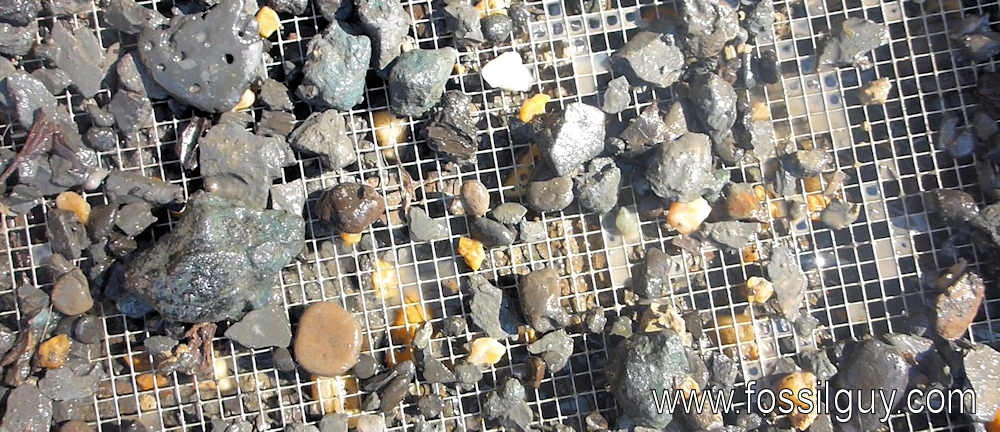
An isolated Hadrosaurus tooth sits in the upper left of the screen mixed with other fossil fragments.
Progress on East Coast Dinosaurs
Despite the uphill battle paleontologists have studying dinosaurs of Appalachia, progress has been made, and a representative sample of dinosaurs have been found. These include:
Theropods
Theropod diversity was much lower. From the Late Cretaceous, at least two Tyrannosaurids have been identified, Dryptosaurus and the huge Appalachiosaurus. One reason for the
low diversity might be due to the surplus of giant crocodiles along the coastlines. These giant crocs, like Deinosuchus, could grow to lengths of 40 feet! These gaint crocodiles may have taken over the echological niche that theropods occupied on Laramidia.
Hadrosaurs
Hadrosaurid diversity was actually quite high, possibly higher than Laramidia. There were many different sized hadrosaurids. Some of these include the large Hadrosaurus foulkii, Lophorhonthon, and the newly discovered Eotrachodon orientalis from Alabama (discovered by amateur fossil hunters).
Ceratopsids and Ankylosaurs
There seems to be no evidence of the armored Ankylosaurs and the Ceratopsids. Although no Ceratopsids have been found, fragmentary remains of basal ceratopsids, the leptoceratopsids, are present in southern Appalachia.
Other Dinosaurs
Many other fragments of dinosaurs have been found, including fragments of an Ornithomomus (Bird Mimmic) and various Nodosaurid (Non-clubbed tailed armored dinosaurs), and sauropods including Astrodon and Astrophocaudia.
Although the dinosaur ecology and diversity was clearly different than that of Laramidia, these dinosaurs have been found to be uniquely adapted to the Appalachian environment. By the very end of the Cretaceous, the Western Interior Seaway begins to close, and the dinosaurs from each island continent start to mix. I'm sure in the future, many more dinosaurs will be discovered from these fragmentary deposits of bones and teeth on the East Coast.
Additional Images
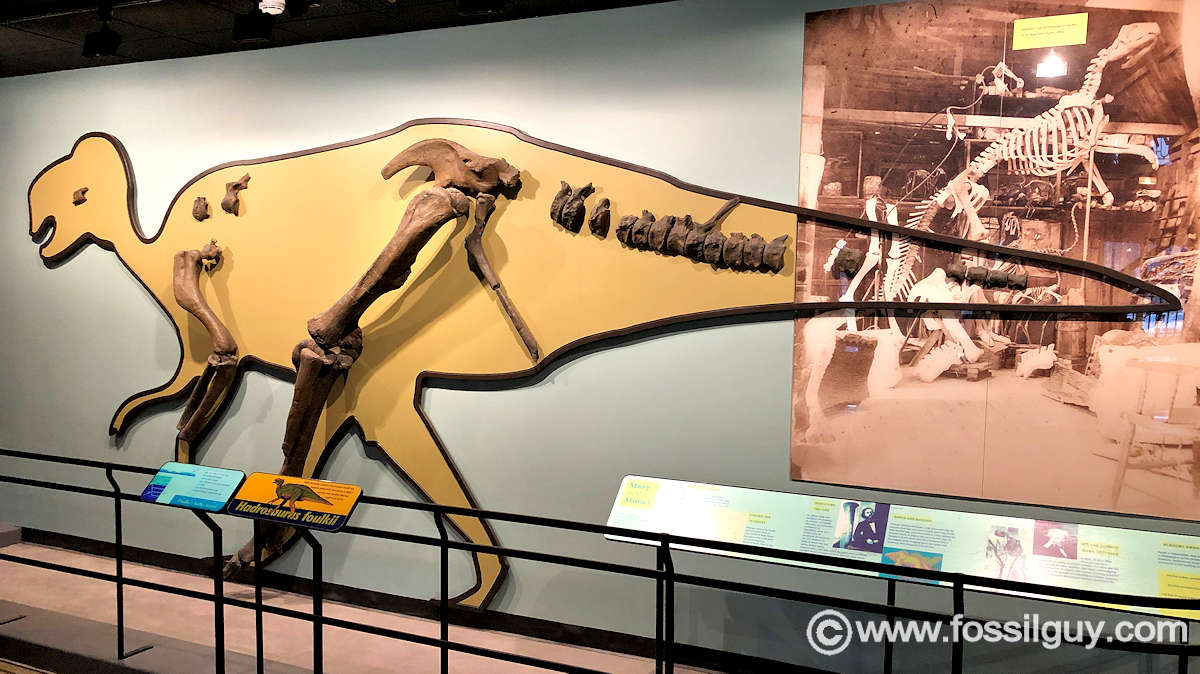
Hadrosaurus foulkii, the first "nearly complete" dinosaur ever found. From Haddenfield, New Jersey (Appalachia).
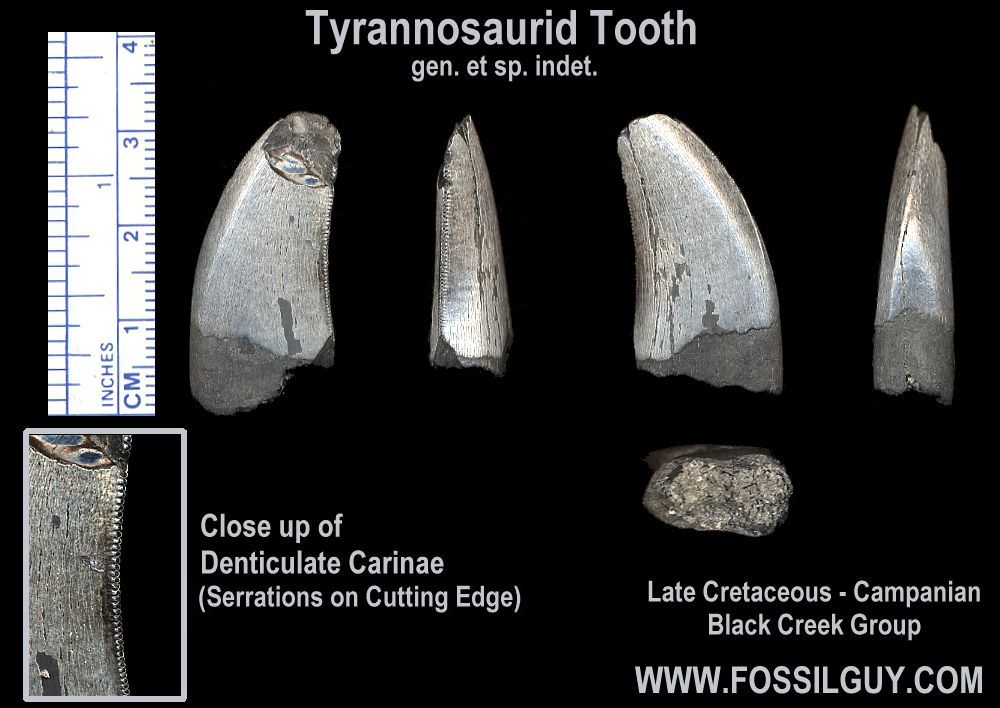
Tyrannosaurid dinosaur fossil tooth found in a lag deposit on the East Coast. Notice the shark tooth to the lower left.
Recommended Dinosaur Books and Educational Items:
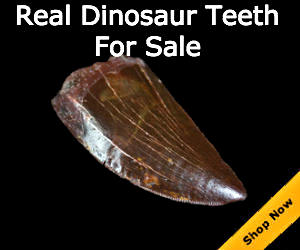
High quality Dinosaur teeth by Fossilera
References / Works Cited
Carr, T. D., Williamson, T., Schwimmer D. R., (2005) A New Genus And Species Of Tyrannosauroid From The Late Cretaceous (Middle Campanian) Demopolis Formation Of Alabama.
Columbus State University, Columbus, Georgia, U.S. Journal of Vertebrate Paleontology. 03/2005; 25(1):119-143.
Prieto-Márquez, A., G. M. Erickson, and J. A. Ebersole., (2016) A primitive hadrosaurid from southeastern North America and the origin and early evolution of 'duck-billed' dinosaurs. Journal of Vertebrate Paleontology. 01/2016.
King, D.T., Jr., and Jones E.D., (1997) Late Cretaceous dinosaurs of the southeastern United States. Gulf Coast Association of Geological Societies Transactions, v. 47, p. 263-269.
Longrich. N. R., (2016) A ceratopsian dinosaur from the Late Cretaceous of eastern North America, and implications for dinosaur biogeography. Cretaceous Research, vol. 57, pp. 199-207; doi: 10.1016/j.cretres.2015.08.004
Schwimmer, D.R., (1997) Late Cretaceous dinosaurs in eastern USA: A taphonomic and biogeographic model of occurences. In: Wolberg, D.L., Stump, E., and Rosenberg, G.D. (eds). Dinofest International. Academy of Natural Sciences, Philadelphia. Pp. 203-211.
Weishampel, D.B., (2006) Another look at the dinosaurs of the East Coast of North America. III Jornadas Internacionales sobre Paleontología de Dinosaurios y su Entorno, Salas de los Infantes, Burgos, Spain. Colectivo Arqueológico-Paleontológico Salense Actas, pp 129-168.

